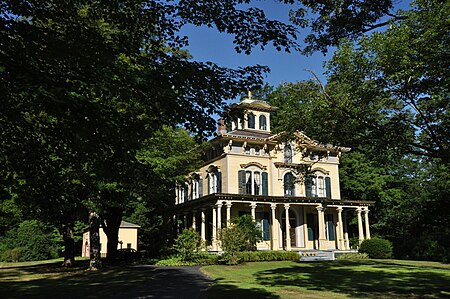Philip Chapin House
Historic district contributing properties in ConnecticutHouses completed in 1867Houses in Litchfield County, ConnecticutHouses on the National Register of Historic Places in ConnecticutItalianate architecture in Connecticut ... and 3 more
National Register of Historic Places in Litchfield County, ConnecticutNew Hartford, ConnecticutUse mdy dates from August 2023

The Philip Chapin House is a historic house at 55 Church Street in the Pine Meadow village of New Hartford, Connecticut. Built in 1867 for a local factory owner, it is an elaborate example of Italianate architecture. It was listed on the National Register of Historic Places in 1977.
Excerpt from the Wikipedia article Philip Chapin House (License: CC BY-SA 3.0, Authors, Images).Philip Chapin House
Church Street,
Geographical coordinates (GPS) Address Nearby Places Show on map
Geographical coordinates (GPS)
| Latitude | Longitude |
|---|---|
| N 41.875 ° | E -72.968888888889 ° |
Address
Church Street 55
06057
Connecticut, United States
Open on Google Maps









